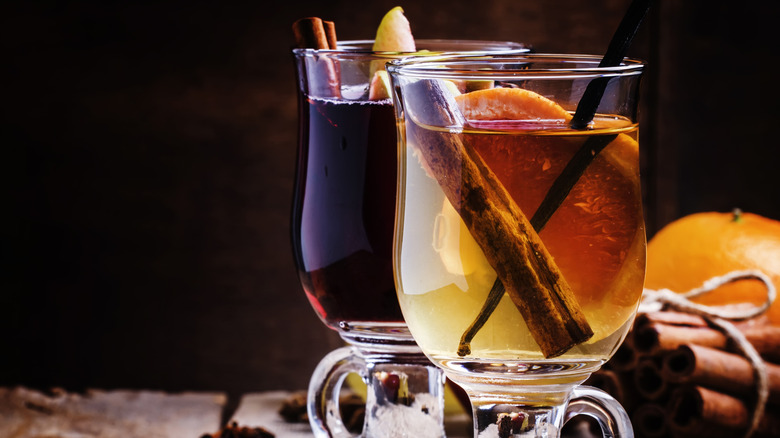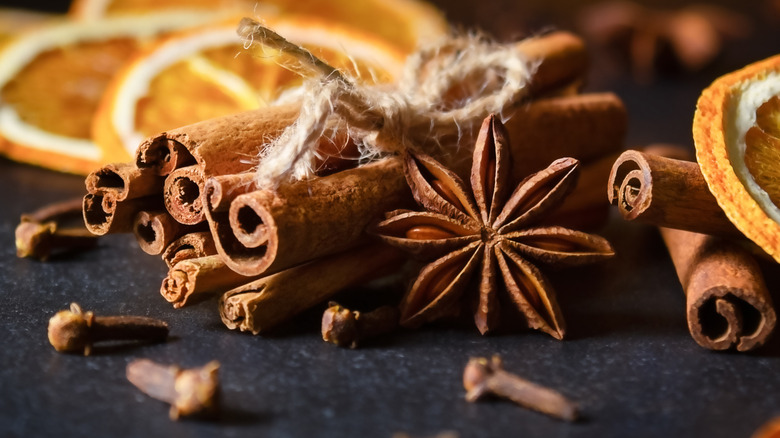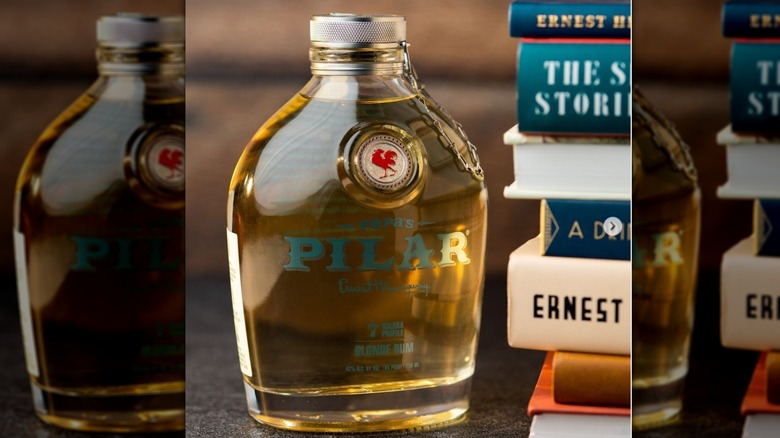We may receive a commission on purchases made from links.

5ph/Getty Images
Winter, despite the cold, has a certain charm, particularly when low temperatures have us reaching for hot drinks that have become seasonal classics. One festive drink that perfectly encapsulates the spirit of the holiday season is mulled wine — or perhaps you call it glögg or glühwein. There are myriad variations of hot spiced wine, but because red wine is the most popular choice when making it, many people are sleeping on white wine. Flavor-wise, white wine can be slightly on the tamer side, but there are so many ways to brighten it up. We spoke to Derek Crow, lead bartender at Bar Zazu in Resorts World Las Vegas, who revealed to us the key ingredients for the most flavorful mulled white wine: Lemon, orange, cinnamon, clove, star anise, sugar, and rum.
Advertisement
Crow told us he likes using lemon “for its level of acidity and ability to brighten any beverage” and “orange to add some sweetness and to help round out and tie in the other flavors and spices in the cocktail.” The addition of the two citruses brings the familiar festive aroma to the drink, and the slices of fruit can also be fresh and vibrant garnishes. If you’re worried about too much acidity, that’s where sugar comes in. “Sugar balances out the acid from the citrus and tones down the wine,” explains Crow.
The festive classics: cinnamon, clove, and star anise

Fireflylight/Getty Images
There are countless recipes for mulled wine circling online, and some of them can truly overcomplicate the spices. Derek Crow’s advice is to just stick to cinnamon, clove, and star anise — the ultimate festive spices. “Cinnamon is a classic fall flavor that provides a rich sharpness,” he explains. Next comes clove, adding “another layer of depth that can really play well with the orange and the cinnamon.” The two spices have historically been used in different versions of mulled wine since the 14th century, so the combination has definitely stood the test of time.
Advertisement
Crow also highlights star anise. “Star anise has a natural perceived sweetness,” he says, “and yields aromatics that soften some of the rough edges of the cinnamon and clove.” Finding the right balance between the three most popular warming spices is key in any hot, well-spiced drink, but perhaps even more so in mulled white wine, which is naturally more acidic and flavorfully delicate than the full-bodied red.
You can buy handy bundles of whole spices online, like these 52 USA packs of star anise, cinnamon, and cloves, if the quantities available in grocery stores are too small.
Quality rum elevates mulled wine

Liudmila Chernetska/Getty Images
If you’ve ever had glögg, the Swedish version of mulled wine, you know it has a special spirit — quite literally. Whiskey or rum are often added to the wine, taking the alcoholic kick of the mulled wine up an extra notch. Having won first place in the 2024 Cardenal Mendoza Gold Jigger Cocktail Competition, Derek Crow knows a thing or two about spirits. He advises using “a good white or blonde rum to help provide a spirit backbone for the beverage” and emphasizes that the rum works very well with the wine and the spices.
Advertisement
Using white rum is a natural choice for mulled white wine since it won’t darken the drink, but it’s not just about the color. For Crow, the flavor notes of quality rum bring the whole drink together. “A natural fresh sugar cane, almost butterscotch note, works great,” he says, highlighting brands like Papa’s Pilar “to create a truly unique mulled wine experience.”
Papa’s Pilar blonde rum is the blonde rum inspired by Ernest Hemingway’s favoritism for light rums. You can add the rum directly into the simmering pot together with the other ingredients, or pour a little bit into the bottom of the serving glass and then top it off with the finished mulled wine, just like we did with amber rum in our classic cozy mulled red wine recipe.
Advertisement
